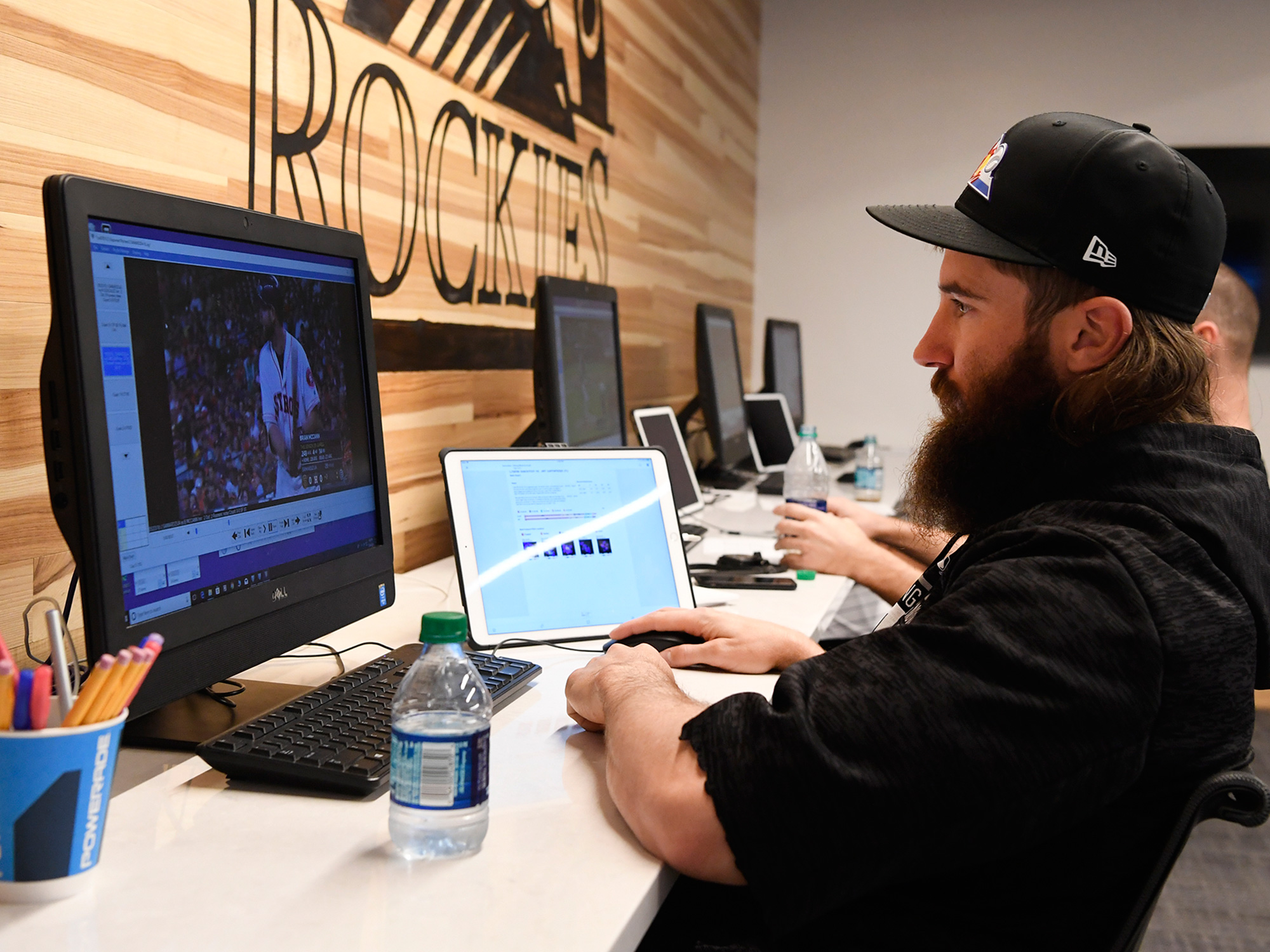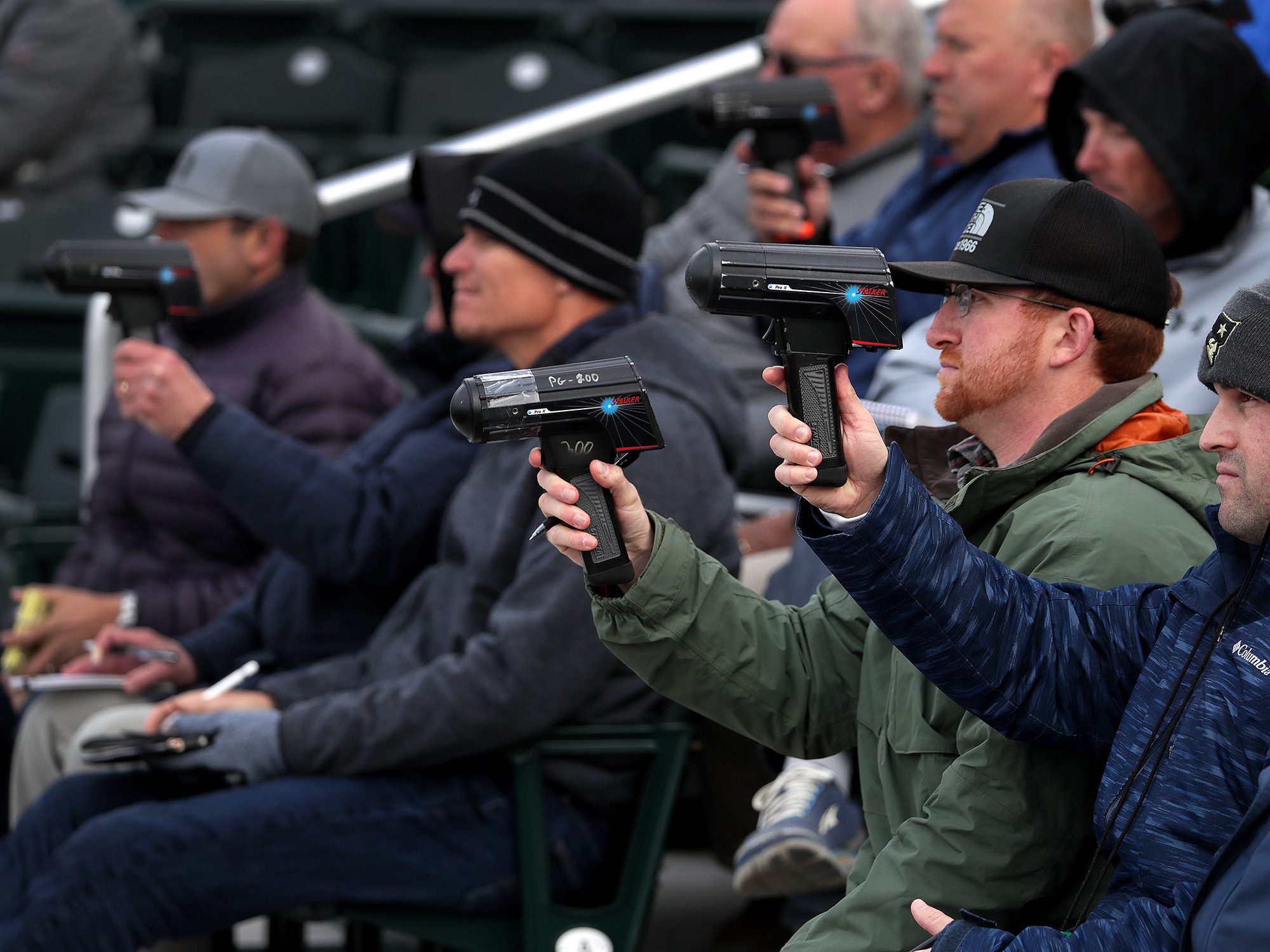In the Age of Analytics, Scouts Are Looking for Life After Baseball

This story appears in the May 6, 2019, issue of Sports Illustrated. For more great storytelling and in-depth analysis, subscribe to the magazine—and get up to 94% off the cover price. Click here for more.
So many scouts have been laid off that the Boys of Summer now gather all year round. When longtime Sarasota Herald-Tribune writer John Brockmann began organizing lunches for old baseball men (average age: roughly 65), in the 1970s, he held them twice annually, at the beginning and end of the offseason. But this past January, when former scout Jim Thrift surveyed the room, he saw a group that did not lack for free time.
"There are 40, 50 people there," Thrift says now. "Only three or four are employed."
Most of the retirees aren't retired by choice; they are among the casualties of a change that has swept through baseball in the past few years—according to Baseball America, 60 scouts lost their job last year. Former scouts, jettisoned from the game, sit on their couches, watching baseball on TV and wondering why no one wants their opinion. So, in an attempt to get them out of the house, Brockmann upped the Boys of Summer lunches to once a month.
For his part, Thrift, now 56, was told in 2015 that his contract with the Orioles would not be renewed. He noticed around Thanksgiving that the phone hadn't rung, so he filed the paperwork to renew his dormant real estate license. A few months later he began working for a home builder. As the season began, he considered where he had been a year earlier. "I used to wonder if I can get this guy for $400,000 in the fifth round," he says. "Now it's, 'Hi, Mr. and Mrs. Smith, would you like to buy this house for $400,000?'"

Many of the laid-off scouts do not have as well developed a backup plan. Today the man delivering your UPS packages (Wade Taylor, 53 years old, 20 years with the Yankees, Dodgers, Nationals and Diamondbacks) or teaching your son or daughter (Ron Brand, 79, 20 years with the Yankees) may once have sat in the stands, wielding a radar gun and a pen. Bob Johnson (72, 41 years with six teams) has begun offering to scout for no salary, just expenses, so much does he miss the game. Marty Scott (63, 15 years with the Marlins and the Rangers) was reduced to requesting donations on GoFundMe after Miami declined to renew his contract while he lay in the hospital recovering from surgery to remove a cancerous tumor. Scouts are not unionized, so although they bat around ideas of a class-action suit over age discrimination, they have no real recourse.
Although GMs are careful to note that scouting departments across the game have for the most part increased over the past few years—the average team, according to research by The Ringer, had 41.5 scouts in 2009 and has 54.6 today—their composition has changed. Today meetings tend to be full of men in their 20s and 30s, speaking up from behind team-issued iPads or laptops, fluent in complex analytics and as quick to cite spin rate as to use the traditional 20-80 scouting scale.
Brand knew his time was up when the Yankees asked him to file his reports on a computer—and worse, to choose evaluations in each category from a drop-down menu.
"You couldn't even use your own words," says Brand. "You had to select from somebody else's words."
In truth, he knew it had been a long time coming. Over the previous season or two, he had started to notice his words seemed to carry less weight. "You just get a feeling," he says. "I go with that a lot. I trust my feelings." Of course, that's what cost him his job.
The most obvious change has come among advance scouts. Twenty years ago every team had at least one man on the road ahead of the team, watching the club his employer would next face. He would note tendencies and chat up writers and rival executives, trying to piece together who swung at high fastballs and whose girlfriend was cheating on him.
Scouts love to cite the story of Mel Didier, who spent more than 60 years in baseball and was still working for the Blue Jays when he died, at age 90 in 2017. As an advance man for the Dodgers in 1988, he noted that A's reliever Dennis Eckersley often went to his slider in 3-and-2 counts. Kirk Gibson remembered his tip, and the rest is history.

Scouting wins championships, Didier's descendants say.
Down the stretch, most contenders assign one or more scouts to cover potential playoff opponents in person. But during the regular season they rely on video. There are so many camera angles and so much data from Statcast, teams are happy to save on the flights and hotel nights.
"Ideally you'd have three [on the road], but that's not gonna happen," says Indians manager Terry Francona, whom scouts consider to be one of their great champions. "You'd have one guy go out and watch a team for five days. It's not cost-effective. And we can probably see more with video. The scout gets one look and they're writing stuff down. We can watch stuff over and over again."
The additional scouts have mostly been assigned to the amateur ranks. "The further away from the big leagues [a player is], the more I need subjective information," says A's GM David Forst. Thrift began scouting at the amateur level in 2011 after his job as an advance man was eliminated. He joined half a dozen other men who hadn't watched a high school game in years. Thrift considers himself old school but bears no ill will toward analytics. He's just sad. When he was starting out, Thrift says, "You had your ears open and your mouth shut" around the legions of experienced scouts. Now, he says with a sigh, "We've learned what we've learned and want to give it to the next generation. There are hundreds of people without anyone to talk to."
Thrift knows advanced metrics work. Last winter he completed a course called Business Analytics: From Data to Insights, at Wharton, seeking to gain fluency in a language in which he was only conversational. He loved it and immediately understood the benefits as applied to baseball. "If I have enough data," he says, "I can tell you what time you're gonna go to Starbucks in June."
That's the problem with that saw about Didier and Eckersley's slider: A computer knows what pitchers throw in 3-and-2 counts too.
